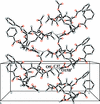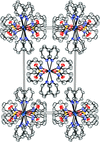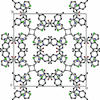issue contents
December 2019 issue

Cover illustration: Automation of both hardware and software plays an increasingly significant role in crystallography and can bring both advantages and pitfalls. One of the supposed selling points of the automation of crystal-structure-determination software is that it removes the need for crystallographic expertise. This means that potential problems may lie undiscovered, and the new structure may be defective in some way or misleading. One consequence of increasing automation in crystallography is the dilution or even the loss of knowledge and understanding of fundamental principles and key practices that have been generated in the past and are now being learnt and applied by fewer scientists. Aspects of this erosion of crystallographic expertise and the contribution of automation were addressed at a recent microsymmposium entitled `Teaching new dogs old tricks' at the 2019 ECM in Vienna. The article entitled `Some reflections on symmetry: pitfalls of automation and some illustrative examples' is the first report from that symposium. It illustrates how an understanding of the many aspects of symmetry can prevent mistakes that may be made by reliance on automatic procedures. Other topics addressed here include pseudo-symmetry, twinning, real and apparent disorder, chirality and structure validation. See: Clegg [Acta Cryst. (2019). E75, 1812-1819].
research communications


























Crystal structure of pyridinium tetraisothiocyanatodipyridinechromium(III) pyridine monosolvate






























 journal menu
journal menu















































